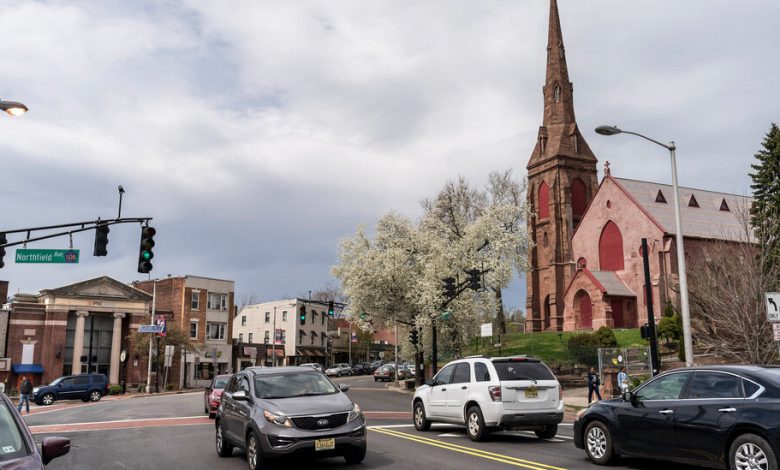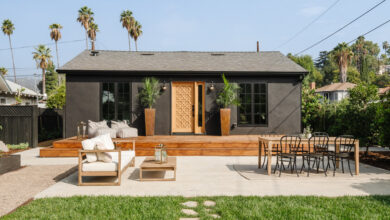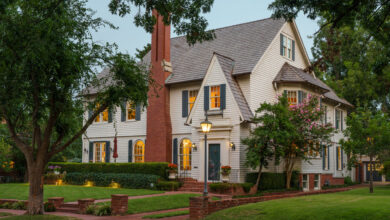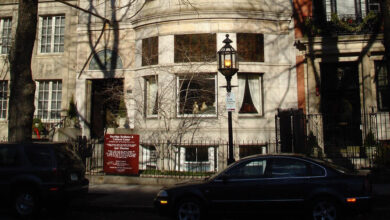West Orange, N.J.: Plentiful Green Space and an Easy Commute

Living in a Brooklyn apartment with two young children in the middle of the pandemic, Megan Melamed, 41, and Alex Abell, 39, started their search for a suburban home in Maplewood, N.J. But the couple, both social workers, soon realized it was out of their price range, so they turned to the nearby Essex County township of West Orange, where they eventually bought a 1915 house with four bedrooms in October 2020, for $457,500.
The couple’s story is typical of how many buyers find West Orange — after searching in better known but more expensive communities, like Maplewood and Montclair.
But Ms. Melamed and Mr. Abell have come to appreciate more than just West Orange’s reasonably priced housing: There’s the manageable commute, the diverse community and the abundant green spaces, including large sections of two Essex County parks.
“It doesn’t take much to be in nature here,” Ms. Melamed said.
But as in other suburban areas, the pandemic has heightened the demand for homes in the township. “Covid brought in a lot of people from the city,” said Amy McCampbell, a West Orange resident and an agent with Village Square Realtors in Montclair.
Jessica Frasz, 40, a graphic artist, and Andrew Frasz, 39, a photographer, moved to West Orange from Brooklyn with their two young children in the fall of 2019, paying $477,000 for a 1930s colonial. When the pandemic began a few months later, the family found that hiking in South Mountain Reservation, an Essex County park, “was something for us to do without coming into contact with people,” Ms. Frasz said.
It was the green space that drew Vanessa July, 30, and Garrett Banks, 33, to West Orange, after riding out the early months of the pandemic in Jersey City, N.J. Ms. July said she longed to be able to “step outside into nature, versus concrete.” The couple bought a four-bedroom house built in 1946 in March 2021, paying $475,000.
The couple, who are African American and work in technology, were also drawn to the multicultural mix: Of the township’s 49,000 residents, 41 percent identify as white, 27 percent as Black, 22 percent as Hispanic and 7 percent as Asian. “We care about having diversity in the neighborhood,” Ms. July said.
The township is also the site of several notable redevelopment projects. An older office park on Executive Drive is being turned into a mix of offices and apartments with a new public library. The old library, near the municipal building, is to be replaced by affordable senior housing.
A vacant property near the Thomas Edison National Historical Park is also slated for redevelopment. The township has named the MBS Group, a California-based company that operates film studios, as interim developer and is in talks about a possible studio complex on the site, said Robert D. Parisi, the township’s mayor.
What You’ll Find
About 18 miles west of Midtown Manhattan, West Orange covers 12 square miles on the first and second ridges of the Watchung Mountains, with views of the New York City skyline. The township is bounded by Livingston, Roseland and Essex Fells to the west; Verona to the north; Montclair to the northeast; Orange to the east; and South Orange and Millburn to the south.
“There’s a ton of variety in the housing stock,” Ms. McCampbell said, with picturesque prewar homes in some neighborhoods and postwar split-levels and Cape Cods in others.
West Orange also has more townhouse communities than some surrounding areas, said Stan Rubin, an agent with Coldwell Banker Realty in Livingston.
What You’ll Pay
According to the Garden State Multiple Listing Service, in the 12 months ending March 25, 727 single-family homes sold for a median price of $498,000, compared with 754 home sales at a median price of $425,000 in the previous 12 months — a decrease in sales volume, Ms. McCampbell said, caused by a lack of inventory.
A recent check of the multiple listing service turned up 64 homes on the market, from a two-bedroom condominium listed for $175,000 to a six-bedroom house on an acre listed for $1.75 million.
The Vibe
West Orange lacks the lively, restaurant-dense downtown of some neighboring communities. Stores, restaurants and other businesses can be found along three miles of Main Street, in two strip shopping centers and in small clusters around the township. Popular eating and drinking establishments include Harper’s Cafe, a Thai restaurant called Fa La La, Nicholas Anthony’s Family Kitchen, Mama Dag’s Seafood & Pizza House and McLoone’s Boathouse.
The Oskar Schindler Performing Arts Center, an outdoor amphitheater owned by the township, offers music and theater, as does Luna Stage, a professional theater founded in Montclair.
The township is home to five golf courses and parts of two sprawling Essex County parks: Eagle Rock Reservation and South Mountain Reservation. Popular attractions at South Mountain Reservation include hiking trails, Turtle Back Zoo, the Richard J. Codey Arena for ice skating and the paddle boats at the Orange Reservoir. Another favorite summer hangout is Ginny Duenkel Pool, owned by the township and named for a local swimmer who competed in the 1964 Olympics.
The Schools
The West Orange public schools serve about 6,600 students in 12 schools: one preschool, seven elementary schools, one sixth-grade school, two middle schools serving seventh and eighth grades, and West Orange High School. The student body is about 36 percent Black, 34 percent Hispanic, 19 percent white and 5 percent Asian, according to the New Jersey Department of Education.
The average SAT scores in 2020-21 were 570 in reading and writing, compared with a statewide average of 557, and 557 in math, compared with a statewide average of 560. About 85 percent of West Orange High School’s graduates continue to college, compared with 74 percent statewide.
Private schools in West Orange include Seton Hall Preparatory School, a Catholic high school for boys, and Golda Och Academy, a Jewish preparatory school for students in prekindergarten through 12th grade.
The Commute
West Orange doesn’t have a train station, but free jitney buses sponsored by the township take commuters to and from New Jersey Transit stations in neighboring towns. The train ride from South Orange to Penn Station in Manhattan takes 35 to 45 minutes; the fare is $7.25 one way or $210 monthly.
The DeCamp Bus Lines trip to the Port Authority Bus Terminal in Midtown Manhattan takes about an hour; the fare is $8.15 one way or $267 for a 40-trip package. The Community Coach bus trip to Manhattan takes about 45 minutes, with a fare of $9.15 one way or $293 for a 40-trip package.
Some commuters prefer to drive about six miles to Newark or Harrison, and take the PATH train into New York. The trip from Harrison to the World Trade Center takes 20 minutes, and costs $2.75 one way or $104 for 40 trips.
For commuters who drive, Interstate 280 cuts through West Orange, offering connections to the Garden State Parkway and New Jersey Turnpike. The drive to Midtown Manhattan takes about 30 minutes with no traffic, but can be much longer during peak travel times.
The History
In 1887, the inventor Thomas Alva Edison opened a laboratory in West Orange, where he worked on motion pictures, storage batteries for electric cars and the phonograph, among many other innovations. The property held the world’s first motion picture studio, the Black Maria, as well as a research library and machine shops. The laboratory closed soon after Edison’s death in 1931, and became the Thomas Edison National Historical Park in 2009.
For weekly email updates on residential real estate news, sign up here. Follow us on Twitter: @nytrealestate.






